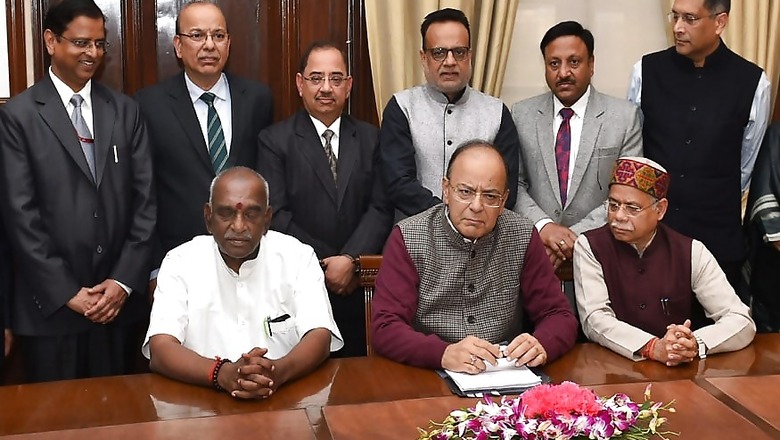
views
The Union Budget 2018-19 is, as anticipated, oriented towards sustainable electoral growth. The focus on the farm sector and poor and tax relief for the fixed income classes is expected to positively impact the health of (vote) banks and generation of (political) capital. Effective delivery will determine whether these measures result in electoral buoyancy at the macro level.
The farmers' agitations of 2017 were so widespread and relentless that even North Block had to sit up and take notice. After all, the farm sector accounts for half of employment and two-thirds of votes. Far from doubling farm incomes, the drop in crop prices, production gluts and demonetisation have devastated farmers in recent years, with the much-vaunted crop insurance schemes having failed to provide a safety net. Finance Minister Arun Jaitley has responded with a slew of measures aimed at the farm sector, with the aim of shoring up incomes.
The most important of these is higher minimum support prices (MSP) for all crops, at 150 per cent over input costs. The potential game-changer here is that where procurement is not possible, the Niti Ayog will work with state governments to find another mechanism (as Madhya Pradesh has done through price deficiency payments which meet the difference between market price and MSP).
The other big issue for farmers is access to markets and protection from price volatility. The FM has reiterated his government's commitment to liberating them from oppressive APMCs (Agricultural Produce Marketing Committees), which effectively prevent them from getting the best possible farmgate prices for their produce.
Towards this end, Jaitley has promised to bring more farmers under the eNAM (National Agriculture Market) net and improve access to storage facilities. Accordingly, Rs 2,000 crore has been allocated for improving agricultural market infrastructure. He has also promised that the erratic agri-commodities export regime, marked by arbitrary export bans, will be liberalised.
Jaitley took note of the crash in prices of tomatoes and onions (Re 1 per kilo) and potatoes (20 paise per kilo) in recent years, which resulted in farmers leaving their produce to rot on roadsides rather than taking it to the market. He earmarked Rs 500 crore for ‘Operation Green’ which will help farmer producer companies to develop storage and processing facilities, with full tax exemption. Overall, food processing will get twice the money it did last year.
Farm credit has gone up yet again, to Rs 11 lakh crore, but sadly, there has been no talk of restructuring it so that small and medium farmers benefit. The rural focus is also evident in allocations for fisheries and animal husbandry, horticulture, organic farming, road and irrigation infrastructure, housing, LPG, electricity and most of all, livelihoods.
Realizing that employment, or the lack of it, is a political Waterloo, Jaitley has proposed a big boost for job-generating MSMEs (Micro, Small & Medium Enterprises), which will get tax breaks and more funding. Labour-intensive sectors like texitiles, footwear and leather, in particular, will benefit.
The biggie in terms of welfare is the massive investment in public health. The budget proposes a Rs 5 lakh cover per family per year, bringing 50 crore people within the ambit of assured secondary and tertiary healthcare. This is bound to be a major vote-catcher, particularly if it is first implemented in poll-bound states, not in the least because it will boost employment in the health sector.
For once, BJP chief Amit Shah and the FM appear to be in tandem. Shah, the rumour-mill has it, has been deeply worried about the impact of economic policy on his electoral balance sheet. In Gujarat, the moribund Congress won 72 of 127 semi-urban and rural assembly seats, against 55 for the BJP. Upcoming challenges include Karnataka, a tough market to crack and Rajasthan, where the BJP’s sensex has seen a downturn.
The big question that emerges from this budget is, what took Jaitley so long? If he wanted to set up 115 aspirational districts featuring new models of development, he could have done so in his first budget and by this time, the results of these experiments would have been evident. The promised focus on rural livelihoods and infrastructure, too, need not have waited until general elections were around the corner.
Feeding aspirations is what the Narendra Modi-led NDA does best. Thus, Swachch Bhaarat and Smart Cities and putting “hawai chappals on a hawai jahaaz”. If, in addition to fuelling dreams, the government can actually make good on the farm income and healthcare front, 2019 may be a snap.


















Comments
0 comment